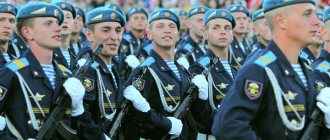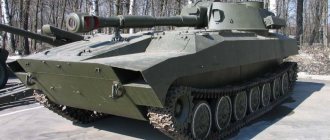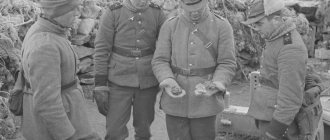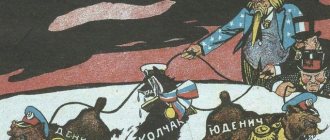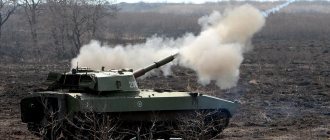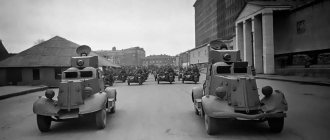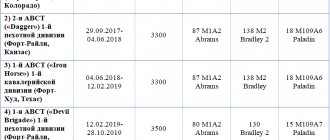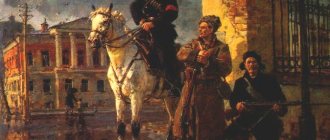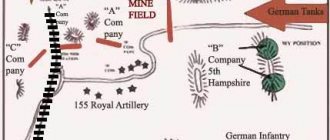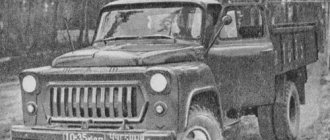Russian military intelligence is a closed state structure that has not undergone fundamental changes in its design since 1991. For such special services, certain emblems are used throughout the world. The symbol of Russian intelligence is a bat, which for a long time denoted belonging not only to the GRU, but also to special units of the KGB. This emblem has remained relevant to this day, despite its recent official replacement by the display of a red carnation with grenades.
History of appearance
The intelligence symbol is directly related to the formation of the Soviet service, which was organized in November 1918. The Revolutionary Military Council approved the structure of the special registration department, which was the prototype of the modern GRU unit.
In reality, at that time, a certain staff was created, which in a matter of years acquired the largest intelligence network in the world. Moreover, even terrorist attacks in the thirties could not destabilize the Intelligence Directorate. Superiors and subordinates used a variety of ways of working. Even the famous resident Richard Sorge refused to return to the Soviet Union, realizing that nothing good awaited him there.
The role of military intelligence
Before telling where the intelligence symbol came from, it is necessary to outline the role of this organization in difficult times (the war with Germany and the accompanying preliminary and subsequent provocations). As a result, the intelligence department managed to outplay the Abwehr, which was considered one of the most constructive and most effective units.
It is not a well-known fact that the partisans in the confrontation between Germany and the Soviet Union were also part of a thoughtful and well-planned plan by the intelligence agency. Behind enemy lines, partisan detachments were organized and concentrated, which did not wear the reconnaissance symbol on their clothes, but were prepared to resist and conduct combat operations in accordance with the science and characteristics of the GRU. Special forces groups allowed individual units to be part of the regular army, which made it possible to strengthen the troops. This was extremely important, especially given the likely nuclear threat.
What does the GRU Military Intelligence flag look like?
This is a rectangular panel with an aspect ratio of 2 to 3. The main color is white. A cross diverges from the center to the corners, the rays of which are each formed by three lines - orange in the center and two black on the sides. In the center of the flag is a stylized image of a carnation, on which is a white three-flamed Grenada.
The carnation has five petals with five teeth each. They are framed with a thin silver edging. The carnation occupies one third of the total width of the flag. It is double-sided, that is, it has the same image on both the front and back sides.
About symbolism
Special forces units were trained to penetrate enemy territory in order to obtain information about the intentions of hostile countries and conduct other non-standard operations.
The bat became the symbol of military intelligence. Everything is simple here - this animal is secretive in nature, makes little noise, but hears everything. Often, members of such groups did not serve directly, remaining special forces, ready at any moment to play the role of a soldier, grenade launcher or sniper. This community became more or less open after the fall of 2000. On November 5, the official Day of Military Intelligence was introduced by order of the Ministry of Defense of the Russian Federation.
Stylistics of execution
GRU tattoos can look different, there are no special restrictions. Whether color is used or monochrome is chosen, patterned or strict implementation is also allowed. Sometimes there are humorous options. A picture is ordered from a master in three-dimensional, three-dimensional or flat.
Execution techniques can be the following: realism, dotwork, new school, blackwork. Examples are presented in photos and videos on the online website. Remember to respect the GRU tattoo - special forces do not forgive frivolity. You will learn a lot about the bearer of such pictures and find a common language with him.
Heraldry
The reconnaissance symbol “bat” began to appear on the chevrons of the corresponding units. The first mention of this sign is attributed by many to the special OBRSpN brigade. For a long period the whole situation was unofficial. After the collapse of the USSR, the situation in the army changed; elite units began to consider and accept official intelligence symbols.
One of the significant dates in this regard was the 75th anniversary of the formation of the GRU (1993). For this anniversary, a completely unknown intelligence officer decided to provide his colleagues with a new image of the intelligence service emblem. The idea was supported by Colonel General F. Ladygin, who served as head of the GRU. The accompanying units and peacekeeping contingent did not lag behind the reconnaissance officers). There is very little information about who put more effort into developing their own heraldry.
At the end of October 1993, the heads of intelligence units were able to prepare a draft report with a description and drawing applications of sleeve insignia and chevrons. At the suggestion of General Kolesnikov, the document was signed by F.I. Ladygin.
Defense Minister Grachev approved it on October 23. Thus, the bat became the symbol of military intelligence. Such a choice cannot be called random. This animal is one of the most secretive and mysterious creatures. It carries out all its vital tasks under cover of darkness and secretly, which is the key to success when conducting reconnaissance operations.
The bat is a symbol of military intelligence
The developed and created symbol was almost never worn openly by employees of intelligence departments and their branches for obvious reasons. Nevertheless, its varieties quickly spread throughout the accompanying engineering, anti-sabotage and artillery units. Some special units used modified sleeve emblems, the essence of which was directly related to the original.
In any Russian intelligence department, the symbol is combined with some animal or bird. Much depends on the characteristics of the branch and geographical location. An equally popular image after the bat was the wolf.
Military intelligence "mouse" became legal after the collapse of the USSR?
No less difficult times for the intelligence service were the fall of the USSR. Imagine, the entire base, structure, information - in an instant lost control, characters and seemed to evaporate from the face of the earth. A decision was immediately made to select an alternative GRU chief by voting. In 1992, Fedor Ladygin was chosen by voting results. An order came to him from above, and the former military man had no choice but to agree, otherwise the consequences would be unfavorable.
His main goal, as Ladygin himself admits, was to preserve the structure of the intelligence agency of the Russian Federation. Not a single programmatic reformation happened under him. The GRU remained under its name, the Main Intelligence Directorate.
GRU history - Yeltsin slightly changed. He was convinced that since the war was over, intelligence could loosen the reins on its spread. Expenditures on the work of the military structure were terribly reduced; one might say they became completely symbolic. All the intelligence officers who were around the world, in almost every strong military country, returned to their homeland. The agent network has become nothing. Information was obtained only from some EU countries and the USA.
Red clove
It is believed that this symbol of intelligence, the photo of which is given below, identifies perseverance, devotion, inflexibility and determination in achieving one’s goals. Grenada with three flames symbolizes the historical image of the grenadiers, considered the most trained members of the elite military units.
Since 1998, the “bat mouse” began to supplant the “red carnation”. This symbol of Russian military intelligence was proposed by the heraldist-artist Yu. Abaturov. The main advantage of this sign is the role of a flower as an identification mark, known to everyone since Soviet films. The number of petals characterizes five types of divisions:
- Ground reconnaissance.
- Information Agency.
- Air units.
- Maritime Diocese.
- Special group.
In addition, there is a hint of the five continents of the globe and a similar number of senses necessary for a scout. Initially, this emblem was displayed on awards “For service in military intelligence.” Then it appeared on the sleeves and chevrons of GRU officers (2000).
Innovations
It is worth noting that the updated symbol of Russian military intelligence initially caused a storm of emotions of misunderstanding among special forces officers and soldiers. Once the decisive role of the reforms became clear, the excitement subsided. At the same time, the “bat” did not disappear anywhere, remaining a cult symbol in the memory, on the tattoos and memories of the people involved. This fact directly answers the question of why the bat has essentially remained a symbol of Russian intelligence forever.
In 2002, the championship is still given to the “red carnation with grenades.” This is largely due to the fact that special forces tried to create their own emblem, different from other analogues. As a result, it became almost impossible to organize all the predators, birds and herbivores that the warriors wanted to see on their stripes.
This is even despite the fact that in 1994 a special department was created responsible for military heraldry and symbols. It got to the point that the said department was not able to count the existing number and types of sleeve patches. This became the prerequisite for the creation of a single emblem of military intelligence. It is noteworthy that in the main office of the GRU of the Russian Federation it still remains on the floor. There is a new sign there too, only on the walls.
GRU the bat is not a field mouse
Not many people know that after the creation of intelligence in 1918, it did not reveal the fact of its formation for a long time. The military intelligence logo was not hung on sleeves and shoulder straps, but rather was carefully hidden by the military. And the intelligence department itself was more like partisans than a well-thought-out military structure.
But by the 1930s, the position of the GRU had strengthened, as if the USSR knew that World War II was already close and a special military unit needed to be prepared for it. Citizens of the Soviet Union "spread" all over the world. They were common residents in countries: Europe, South and North Africa, Japan and China. But in fact, they conducted various intelligence operations that concerned the most powerful country of the USSR. As a rule, candidates for intelligence officers were ordinary people, volunteers with heightened instincts and intuitions. Their work was assessed at a very high rate from the state, but with strict requirements, failure to comply with which was punishable by death. The USSR authorities understood that having their citizens on the territory of other countries, they could easily betray their “homeland,” since the intelligence officers realized who would actually bring the threat and whose system would start the war first. Therefore, the selection of residents took place through various psychological and physical tests of candidates for loyalty to their state. Movies and books alone, based on real events, contain a thousand acts when young people gave their lives without giving out information about the USSR. So, in life there were even more such actions. Particularly striking were the partisans who deliberately surrendered. Our grandfather told us one of these stories. We quote:
“Pilugin Maxim was in my detachment; at the time of 1941-1945, the partisans had their own units in each military district. When the German raid reached Moscow in 1941, where we had set up a base for transmitting information to the main military headquarters, we had to flee. Maxim Pilugin, who was 19 years old at that time, decided to stay and surrender to German captivity. He managed to pretend to be a traitor to his homeland, while avoiding execution by the German group. A day later he managed to escape from the drunken and tired Germans. He brought important information about the arrival of the next German detachment in the Moscow region. For such a unique and courageous act, the guy was almost given the death penalty - a tribunal. The authorities believed that he did this intentionally and gave evidence to the Germans about the location of the remaining partisan detachments in Moscow. We and the leadership managed to refute their assumptions and Pilugin was released. For me he is a hero."
Users' opinions
As some experts note in their comments, the emblem of “Batman”, or the bat, in the Soviet Union was an official one of the special units under the code number “897”.
A stencil sketch of a bat was applied to equipment, machinery and personal items. According to the charter, other drawings and displays with animals, birds or other symbols were unacceptable. Nevertheless, similar marks were used by the legendary special forces such as “459” or “TurkVO” (scorpion, wolf, bear).
Let's summarize
In general, it can be argued that the bat is the main element of the symbolism of Russian military intelligence. Despite the appearance of the “red carnation”, the emblem did not lose its position, appearing on chevrons, flags and in corresponding folklore. After the development of the grenadine-floral composition, many GRU officers and special forces found opportunities to display the “mice” on their “standards”. Moreover, this also applies to the management team, including the main headquarters, the walls of which are decorated with this very emblem.
Today, the Second Main Directorate of the General Staff (GRU GSH) is a powerful military unit, the exact information about which (in terms of composition and organization) is a military secret. The updated center of this organization has been operating since the beginning of November 2006. The delivery of the facility was timed to coincide with the anniversary of the revolution; it is from there that the most important and useful intelligence information comes from, influencing the further actions of special units and units. The building was designed using modern technologies, taking into account special safety. Only people with a special pass, controlled by various parameters, can enter most premises. But at the entrance there is a three-dimensional emblem of the military intelligence of the Russian Federation.
Where did the “bat” come from, which for many years served as the emblem of military intelligence of the USSR and Russia, and, even after its official replacement with the “carnation with grenades”, did not leave the headquarters of the Main Intelligence Directorate of Russia?
Here are some hypotheses on this issue that are present on the Internet:
An investigation conducted by the website Intermonitor.ru: “We found a mention of the origin of the “Bat” as a symbol of military intelligence, which has authorship, in an authoritative publication - the magazine “National Forecast”, published by ITAR-TASS Ural. It is, in principle, typical for ITAR-TASS to verify information - therefore such a source deserves attention.
“The symbol of Russian military intelligence was invented by a journalist from Yekaterinburg. He claims that while serving in the Northern Fleet special forces in 1987, he drew the emblem for his group - a bat inscribed in a globe. It was used to “stencil” the overalls of all the fighters and commanders of the group. For the first time, the Severomorsk emblem was publicly “lit up” in the summer of 1988 at the championship of special forces units in Pechory (now Estonian Petseri). The group then participated in the special forces championship for the first time, but performed successfully, and the emblem on the chest of the “Navy Seals” was remembered by the USSR intelligence elite. A few years later, unit commander Gennady Ivanovich Zakharov, already with the rank of rear admiral, with the “core” of his combat swimmers, went to serve in the security of President Yeltsin. And the bat, invented then for internal circulation, took on a life of its own.”
Thanks to the fact that the Intermonitor editorial office is located in Yekaterinburg, it was possible to find eyewitnesses of this event and question them.
Former North Sea special forces (currently serving in a number of Russian special services) confirmed the information of the National Forecast. According to the eyewitnesses we interviewed, that mouse was exactly like the illustration in our material, but the globe was not round, but oval. Parallels and meridians were present on it. The mouse itself was exactly the same. And yet - there was not a single letter. The overalls had only the emblem and numbers - each fighter had his own number. For example, the number 1412 meant “141 reconnaissance group, 2nd number.”
Since the early 1990s, the GRU had an emblem in the form of a black bat spreading its wings over the globe, but in 2000 this emblem was replaced by another - a red carnation, which was proposed by the famous heraldist Yu.V. Abaturov. Initially, it appears on the breastplate “For Service in Military Intelligence”, in 2000 it becomes an element of the large emblem and the new sleeve insignia of the GRU, and finally, in 2005, it finally occupies a central place on all heraldic insignia, including sleeve patches.
According to some media outlets, this happened after a major scandal: “Even the department of military heraldry and symbols, specially created in 1994 at the General Staff of the Ministry of Defense of the Russian Federation, was unable to regulate the riot of animals, birds and skulls that were spread out on military patches. At the moment, no one can say exactly how many types of sleeve patches exist in the Russian army.
The last straw that broke the patience of the military commanders was the prank of one of the GRU special forces brigades. The special forces broke into the heraldry department and demanded that another scorpion be approved as a symbol of the brigade. The response was tough: a single emblem was introduced for the entire GRU.”
The situation with the special forces who broke into the heraldry department is, of course, more like a fairy tale, but, nevertheless, the new emblem with a carnation went to the special forces too!
Elements of the GRU emblems symbolize: the three-flame grenade (the historical sign of the grenadiers - the most trained military personnel of the elite units of the Russian army, distinguished by high combat skill, training and the ability to perform complex combat and service tasks) - a continuation of the glorious combat traditions of the Russian army; The red carnation (a symbol of perseverance, devotion, inflexibility and determination in achieving set goals) is the most important quality of the military personnel of the Directorate, formations and special purpose military units of the Armed Forces of the Russian Federation.
It is noteworthy that even after replacing the “Bat” with the “Red Carnation”, not only the special forces and “pear soldiers” did not stop considering “mice” as their symbol, but also the “Bat” remained on the floor in the headquarters of the Main Intelligence Directorate, adjacent to the “Carnation” attached to the wall of the hall.
Here's the story... But on the Internet, there are also other eyewitness accounts who claim to have seen the bat emblem much earlier than the 1988 event described above by Intermonitor.
Here are some of them:
- In the spring of 1987, during the annual training of officers-listeners of the General Staff of the Russian Armed Forces, demonstration classes were held, where two officers already had a similar emblem. While working at a training place in the RU SF, all officers of the Directorate saw this, including Vice Admiral Motsak.
- Other eyewitnesses met the unofficial “mouse” in the early 80s... And in Afghanistan in 1986-88. from the GRU special forces.
- Those who served in the Special Forces of the GRU in 1987-89 saw some of their warrant officers on the shoulder. But, not against the backdrop of the globe, but separately. And ensigns have served since the early 80s, so the “mouse” was already there then.
- And here is the opinion of military intelligence officers of the Pacific Fleet: “In 1993, domestic military intelligence was preparing to celebrate the 75th anniversary of its creation. For this anniversary, someone who is fond of heraldry from among the GRU employees decided to present a gift to his colleagues in the form of new symbols. This proposal received the support of the head of the GRU, Colonel General F.I. Ladygina. By that time, as is known, the Airborne Forces, as well as the Russian contingent of peacekeeping forces in Transnistria (the letters “MS” on a blue rectangular patch) had already acquired their own officially approved sleeve insignia. In the second half of October, the GRU prepared a draft report from the Chief of the General Staff addressed to the Minister of Defense, with a description and drawings of two sleeve insignia attached: for military intelligence agencies and special-purpose military units. October 22 F.I. Ladygin signed it “by hand” from the Chief of the General Staff, Colonel General M.P. Kolesnikov, and the next day the Minister of Defense, Army General P.S. Grachev approved descriptions and drawings of sleeve insignia for military personnel of military intelligence agencies and special purpose military units.” Both sleeve insignia featured a bat. The bat should be gold on a blue globe (or on the background of a target for special forces).
So the bat became a symbol of military intelligence and special forces units. However, in the GRU, as well as in the intelligence departments of the branches of the armed forces, districts and fleets, the sleeve insignia approved for them was never worn for obvious reasons. But its numerous varieties quickly spread throughout military, artillery and engineering reconnaissance units and units, as well as anti-sabotage warfare. In special-purpose formations and units, various versions of sleeve insignia, made based on the approved design, were also widely used.
So, what is the question of when did the bat appear on the emblems of special forces and military intelligence? and who is its author? remains open...
It remains to add that the palm in the use of the image of a bat belongs to the air forces of Great Britain and the United States: bats first appeared on the emblems of British and American squadrons during the First World War. In the early 1920s, they became widespread in the aviation of the US Navy and Marine Corps, and in the Second World War in the Royal Air Forces of Canada and the Union of South Africa. The image of a bat is used on the emblem of South Korean military intelligence and Israeli naval intelligence.
Posted in and tagged
Today will be celebrated with special pomp in the army special forces, or simply the GRU special forces. October 24 occupies a special place in the life of any special forces soldier simply because it is a memorable day in his honor, in honor of everyone who, over the past half century or more, has given up public life in exchange for the right to always be on the front line, even in peacetime. But this year the special forces units of the Russian Army are celebrating their 65th anniversary.
Although the special forces are more than respectable in age, their fighters are celebrating their professional day for only the ninth time. Special Forces Day, one of the 14 memorable days of the Armed Forces of the Russian Federation, was established only on May 31, 2006, by decree of Russian President Vladimir Putin No. 549 “On the establishment of professional holidays and memorable days in the Armed Forces of the Russian Federation.”
LiveInternetLiveInternet
Quote from officersha
Read in full In your quotation book or community!
*The Mystery of the Bat* - GRU RF Armed Forces
Main Directorate of the General Staff of the Russian Armed Forces - much better known by the abbreviation GRU -
celebrates its centennial anniversary.
The AiF website published an article by special services historian Sergei Ptichkin “Secrets of the Bat. History of the Main Intelligence Directorate of Russia"
. Our blog offers you to familiarize yourself with the material.
https://bmpd.livejournal.com/3401674.html
The bat once became the emblem of military intelligence - it makes little noise, but hears everything.
So the bat became a symbol of military intelligence and special forces units. The choice was far from accidental. The bat has always been considered one of the most mysterious and secretive creatures operating under the cover of darkness. Well, secrecy, as we know, is the key to a successful intelligence operation.
However, in the GRU, as well as in the intelligence departments of the branches of the armed forces, districts and fleets, the sleeve insignia approved for them was never worn for obvious reasons. But its numerous varieties quickly spread throughout military, artillery and engineering reconnaissance units and units, as well as anti-sabotage warfare. In special-purpose formations and units, various versions of sleeve insignia, made based on the approved design, were also widely used.
Each military intelligence unit has its own unique symbols, these include various variations with a bat, and some specific sleeve patches. Very often, individual units of the Special Forces (Special Forces) troops use predatory animals and birds as their symbol - here everything depends on the geographical location and the specifics of the tasks performed.
But starting in 1998, the bat began to gradually be replaced by a new symbol of military intelligence, the red carnation, which was proposed by the famous heraldist Yu.V. Abaturov. The symbolism here is very clear: carnations were very often used by Soviet intelligence officers as an identification mark.
Well, the number of petals on the new emblem of military intelligence is five types of intelligence (ground, air, sea, information, special), five continents on the globe, five extremely developed senses of an intelligence officer. It initially appears on the insignia "For Service in Military Intelligence". In 2000, it became an element of the large emblem and the new sleeve insignia of the GRU and, finally, in 2005, it finally occupied a central place on all heraldic insignia, including sleeve patches.
The bat is the main element of the symbolism of Russian military intelligence, even despite the appearance of the “carnation” it does not give up its position: this symbol today is not only on chevrons and flags, it has also become an element of soldier’s folklore.
It is noteworthy that even after replacing the “Bat” with the “Red Carnation”, not only the special forces and “pear soldiers” did not stop considering “mice” as their symbol, but also the “Bat” remained on the floor in the headquarters of the Main Intelligence Directorate, adjacent to the “Carnation” attached to the wall of the hall.
Russian President Vladimir Putin during a visit to the headquarters of the Main Intelligence Directorate of the General Staff of the Armed Forces of Russia, 08.11.2006 (c) press service of the President of Russia
Today's GRU headquarters has been operating since November 5, 2006, the facility was commissioned just in time for the holiday, it is here that the most important intelligence information is now received, and from here the command of military special forces units is carried out. The building is designed in accordance with the most modern technologies, not only construction, but also security - only selected employees can enter many “compartments” of the Aquarium.
Well, the entrance is decorated with a giant emblem of the Russian military intelligence.
***
History of the Main Intelligence Directorate of Russia
— Of course, intelligence, primarily military, appeared in Russia earlier than 100 years ago. Nevertheless, the GRU leadership did not begin to trace its history back to Tsar Gorokh, which is the sin of many law enforcement agencies. November 5 was named the founding day of military intelligence, first Soviet and then Russian. It was on this day in 1918 that the secret order of the Revolutionary Military Council of the RSFSR No. 197/27 was issued on the staff of the Field Headquarters, which included the Registration Department. It coordinated the activities of the Red Army intelligence agencies and prepared generalized reports for the Field Headquarters of the Red Army based on intelligence information received from various sources. The Registration Directorate, which was initiated by Leon Trotsky (perhaps because Stalin always regarded military intelligence with suspicion), became not only the prototype, but also the foundation on which the current GRU was built. Much water has passed under the bridge since then, and the structure of military intelligence has been reformed many times. It is impossible to tell the entire multifaceted history of management. Let's remember the most striking episodes, alas, again not all of them.
In just 20 years, by the beginning of World War II, it was possible to form a unique military intelligence network around the world. GRU residencies operated in almost all countries of Europe, North and South America, China and Japan. In the overwhelming majority of cases, foreign agents began working for Red Army intelligence voluntarily and worked for free.
Among them were not only communists, people of leftist views, but also aristocrats, representatives of the bourgeoisie. Unlike those who today equate the concepts of “fascism” and “communism” in their minds, they lived in the real time of the existence of two systems and understood which of them really threatens the world. However, the phenomenon that people with “blue blood” went to serve Soviet military intelligence, who often gave their lives for ideals that seemed completely alien to them, is no longer fully understandable and explainable today. The role played by military intelligence during the Patriotic War is invaluable. She managed to outplay the legendary Abwehr, and we are talking about military intelligence, and about agents, and about saboteurs. Soviet partisans were also a project of the intelligence department; detachments behind enemy lines, as a rule, were created by officers of this structure.
After 1945, the GRU experienced difficult times. A serious blow to his prestige was dealt by the traitor Colonel Penkovsky, who revealed many secrets to British intelligence. The KGB, which always treated military intelligence officers with a feeling of jealousy, because it had its own intelligence service - the First Main Directorate, in the end, decided to generally take control of the work of its competitors, including administrative control. In 1963, the 1st deputy chairman of the KGB, Pyotr Ivanovich Ivashutin, was appointed to the post of head of the GRU, who served in this post for 24 years. A record that is unlikely to be broken.
Coming from the state security service, General Ivashutin did something incredible. He did not put the KGB over the GRU; on the contrary, he did everything to ensure that the USSR’s military intelligence became one of the most powerful and, perhaps, the most informed in the world.
On his initiative, a system began to operate around the clock for receiving and processing information from all possible theaters of military operations. And then it was almost the entire planet. In the USSR, oddly enough, it was under Ivashutin that they first created a system for warning top management about military threats, no matter where they came from, and in real time. A repetition of the tragic effect of June 22, 1941 became impossible. Largely thanks to the GRU officers working in the United States, the Cuban Missile Crisis did not develop into the Third World War, which is again associated with the name of their boss. Almost immediately after Ivashutin headed the GRU, he traveled to Cuba. And with his direct participation, the Electronic Intelligence Center in Lourdes was created in the shortest possible time, which existed until the beginning of the 21st century. The entire territory of the United States was under the hood of Soviet radio wiretapping. Radio and telephone communications between the Pentagon and its units are no longer secret for Moscow. Ivashutin ensured that the nascent space reconnaissance came under the control and command of the GRU. And today it is one of the most important divisions of the Main Directorate of the General Staff. Quite rightly, former security officer General of the Army Ivashutin remains the most respected head of military intelligence in our country.
After the disappearance of the USSR from the political map of the world, a lot of effort was made to defam and weaken the GRU as much as possible . We won’t guess who was behind all this, but it was. In particular, the position of head of the GRU was ordered from above to be elected by general vote on an alternative basis. This did not happen even under the Bolsheviks, when everyone was elected and re-elected, everywhere and for any reason. After the failure of the State Emergency Committee, the “democratic commissar” Colonel-General Timokhin, who had previously served in the air defense forces, was appointed to the high post of head of the GRU. He did not distinguish himself in this position and could not be re-elected. In 1992, as a result of a closed competition, career intelligence officer Fyodor Ivanovich Ladygin became the head of the GRU, becoming the first and last head of the GRU chosen on an alternative basis. He himself later recalled this with a smile. The order came again from above, I had to obey. However, how the elections took place and who took part in the voting remained a mystery. Subsequently, military intelligence chiefs were no longer elected. Since Ladygin was a career intelligence officer, and, moreover, elected by the “popular will,” he managed to save the GRU from pogrom reforms. But then even the KGB could not resist, losing its “committee-state” name. The GRU remains the same as the GRU. And the basis of its structure, fine-tuned by Ivashutin, was preserved for a long time. The “wild 90s” turned out to be the most difficult for military intelligence officers in their entire history . We had to optimize expenses in accordance with the budget received from the state. And it became more and more symbolic. Yeltsin and the majority of his team were convinced that Russia no longer had military enemies, which means that military intelligence in its previous form was not needed.
GRU veterans, whose names are probably not worth mentioning since they are widely unknown, sadly said that they had to mothball almost the entire foreign intelligence network, except for the United States and European NATO countries, and even then only those that border the Russian Federation. However, that was 20 years ago. By today, maybe something has changed. Although the radio engineering base in Lourdes was lost in 2002, it seems, forever. What instead of "Aquarium"? In the new century, attitudes towards the GRU began to change for the better. In 2006, the almost incredible happened. The Main Directorate of the General Staff received a new headquarters. On November 8 of the same year, shortly after celebrating Military Intelligence Day, President Putin visited her. And he arrived by helicopter. Previously, the main headquarters of the GRU was located on Khoroshevskoye Shosse in a building known as the “Aquarium” and which was once built as an infectious diseases hospital . The current building, erected by Spetsstroy in 3.5 years, looks like a futuristic palace made of glass and concrete. 8 floors equipped with the most modern and often unique equipment, two helipads, a huge sports block, and lounges. Here you can live and work independently, without leaving your headquarters, for several weeks. A distinctive feature of the new headquarters was a situation room with a huge electronic map of the world. It reflects in real time the location of all nuclear submarines carrying nuclear ballistic missiles, aircraft carrier formations and large military formations in the territories adjacent to the Russian borders.
It is worth remembering what the president said then about the role of military intelligence: “It is obvious that the situation in the world, the challenges that Russia faces, require the GRU to constantly improve its activities. I am well aware of the results of the work of the GRU; your combat units act clearly and practically without misfires during counter-terrorism operations, including the special forces that are part of the GRU. Timely and accurate information received from the GRU more than once formed the basis for the most important government decisions and helped to promptly counter threats to national security. The GRU plays a special, unique role in the country’s security system; it is a powerful and effective tool for protecting our national interests.” The President mentioned the GRU special forces. Perhaps this was the first time in all the past decades that the very phrase “GRU special forces” was heard from the lips of the head of state, and in such a positive way. These units were the most mysterious in the Soviet army. On October 24, 1950, the secret Directive of the USSR Minister of War No. ORG/2/395/832 appeared. In all military districts, 46 separate special forces companies of 120 people each were created. Then special forces brigades appeared. They were classified more strictly than the Strategic Missile Forces units. Everyone knew that we had strategic missiles. And at first, even many generals knew about the GRU special forces only by hearsay. In the event of a threat of a new world war, hundreds of reconnaissance and sabotage groups were to be sent to NATO countries, including the United States, at once. Surely they would all have died, but the control of troops and the bases of strategic forces - missile, aviation, naval - would have been damaged, making the war against the USSR pointless. The training of fighters in the domestic special forces was, without exaggeration, the best in the world. In the late 1990s, traditional competitions between GRU special forces groups were held. We were friends with everyone back then. And for the first time, two units of the US Army - the Green Berets and the Navy SEALs - took part in them, albeit outside the competition. Everything is as if chosen - real tanned scruff. But at all stages they showed worse results than our special forces soldiers, most of whom were conscripts.
Is it any wonder that the image of a special forces soldier already in the Soviet media during the late perestroika period was depicted exclusively in an animal form. These thugs with sapper blades in their hands, chasing protesting old women through the alleys of Tbilisi, the streets of Alma-Ata, Fergana or Baku, and later the capitals of the Baltic republics. It is a pity that even during the period of wide publicity it was impossible to tell the truth about the same war in Afghanistan, about how special forces officers knew how to take care of their soldiers, how they eliminated gangs of Mujahideen trained by instructors from the United States. Only two GRU special forces brigades operated in Afghanistan - the 15th and 22nd. 3 years before the withdrawal of our troops from the DRA, the 15th Brigade, for example, lost 140 soldiers and officers killed. At the same time, its scouts destroyed and captured 9 thousand dushmans, captured dozens of tons of weapons, ammunition and explosives. We saved the lives of thousands of limited military personnel and civilians.
As the “Afghans” special forces themselves recall, if they had been allowed to act as they knew how, there would have been no active combat operations in the war “beyond the river” at all. Everything would be nipped in the bud.
Be that as it may, one 15th GRU brigade, stationed in Uzbekistan, put out the civil war that began in Tajikistan in a few months. By the way, the brigade was then commanded by Colonel Vladimir Kvachkov, who is now in prison. Many experts and GRU veterans believe that his arrest is a consequence of the policy of discrediting military intelligence, which continues to this day. Scouts entered Tajikistan at the end of the summer of 1992, and by the spring of 1993 the situation there had stabilized. Without any bombing of Dushanbe. Moreover, Tajikistan bordered on Afghanistan, where power belonged to the Wahhabis. Let us remember the promise of the late Pavel Grachev to destroy all militants in Chechnya with the help of two airborne regiments, let us remember the ruins of Grozny and the counter-terrorism operation in the North Caucasus, which lasted almost 10 years. Not without the participation of military intelligence in Chechnya, Dudayev and Khattab, Barayev and Maskhadov were eliminated. Alas, the GRU special forces suffered losses in Chechnya twice as large as in Afghanistan. But this is not his fault, but rather the misfortune of the entire country at that time. The GRU developed a unique methodology for training elite fighters, naturally only officers . It was possible to restore the foundations of ancient hand-to-hand combat and adapt them to modern conditions. Those who completed a full course of training according to the system called COLLECTION - Russian Combat System - became truly invulnerable. Moreover, they could knock down an opponent with an effort of will, without coming into direct contact with him.
During the mentioned special forces competitions in which the Americans took part, this was demonstrated in front of television cameras. One of the strong sergeants of the SEAL unit fell as if knocked down when he was “pushed” by the hand of a Russian officer who was several meters away from him. This episode is sometimes shown on television programs dedicated to military martial arts. The fire training technique is also interesting. One of its creators is Colonel Sergei Sergienko. Here is his story: “We carefully studied pistol shooting techniques used in all intelligence services in the world. Their common feature is that everywhere fire is fired only from a static position and with sighting through the sighting device. This means that while preparing and firing a shot, the shooter himself becomes a stationary target with an extremely narrowed field of view. We created a shooting school in Russian, devoid of these shortcomings. We teach you how to shoot while moving without sighting through an aiming device from any position. A trained fighter is able to fire the entire PM clip (8 rounds) into a tall figure in 1 second, actually in bursts, while continuously moving. In addition to instilling purely technical skills, psychological preparation is required, allowing you to shoot effectively in conditions of significantly limited observation capabilities - in smoke, fog, at dusk, at night and even in complete darkness...
Here we must reduce our delight and ask: how, having such super fighters, did the GRU allow itself to be blamed for the Skripal scandal? Really, how? Skripal is a traitor, therefore, from the point of view of the moral and ethical standards of any intelligence service, from Mossad to Mi-6, he could be physically eliminated. But what does the eccentric Boshirov and Petrov have to do with it? According to the British, they - GRU officers - entered the Skripals' apartment, where they smeared the door handles with poison and sprayed it inside the premises.
Firstly, the fact of penetration was not recorded, although there were many video cameras in the area where Skripal lived. Secondly, the picture of the poisoning of the father and daughter clearly indicates that they were given the poison during a visit to a beer bar, and in strictly dosed quantities for each. Only in this case could they lose consciousness at the same time. If they had caught Novichok, as if by accident, in equal doses, then, most likely, the miniature daughter would have lost consciousness first, and her much more massive father would have had time to call an ambulance for her. So the involvement of Boshirov and Petrov in the poisoning of the traitor looks absurd. The question is: why were they immediately identified as GRU officers? It was not because of the intrigues of “internal competitors” that the GRU found itself at the center of a global scandal on the anniversary of its centenary? Or maybe that’s why it turned out that it was resurrected from the ashes of the 1990s and its ability to track military threats to our country is now at the highest level? Let us recall once again the words of President Putin when visiting the new headquarters of the Main Directorate: “The GRU plays a special, unique role in the country’s security system; it is a powerful and effective tool for protecting our national interests.”
This may be the answer to the question of why the West suddenly began a campaign to discredit the Main Intelligence Directorate, focusing on the complete loss of professionalism of its employees.
| 89 Russian President Vladimir Putin congratulated military intelligence officers on the upcoming 100th anniversary of the department and proposed returning to the Main Directorate of the General Staff of the Armed Forces the name by which it is known throughout the world - GRU. Following the poisoning of the Skripals and several British citizens in Salisbury and the official accusation that Russian military intelligence carried out cyberattacks against the Organization for the Prohibition of Chemical Weapons (OPCW), the World Anti-Doping Agency WADA and investigators leading the case of the crash of the Malaysian Boeing MH-17 in Donbass, the abbreviation GRU began to be often mentioned in the speeches of political leaders and the world media. “I congratulate you on the upcoming professional holiday - Military Intelligence Day and the 100th anniversary of the legendary GRU,” RIA Novosti quoted Putin as saying at a gala event at the Russian Army Theater. The Main Directorate of the General Staff of the Armed Forces appeared in 2010 as a result of the renaming of the Main Intelligence Directorate (GRU) of the General Staff. “It’s not clear where the word ‘intelligence’ disappeared - the Main Intelligence Directorate should be restored,” Putin said. According to the agency, his proposal was met with applause. According to Putin, Russian military intelligence is distinguished by high professionalism, as well as unique capabilities in conducting special operations. “As the Supreme Commander-in-Chief, I certainly know your unique capabilities, without any exaggeration, including in conducting special operations, and I highly appreciate the information and analytical materials and reports that are prepared for the country’s leadership in the Main Directorate of the General Staff. I am confident in your professionalism, personal courage and determination, that each of you will do everything for Russia and our people,” he said. In the Russian Empire, military intelligence was created in 1810 on the initiative of the then Minister of War Barclay de Tolly. On November 5, 1918, Leon Trotsky, by secret order # 197/27, approved the structure of the Field Headquarters of the Revolutionary Military Council of the RSFSR, which included the intelligence department. For the first two and a half years, for purposes of secrecy, it was called the Registration Department. Its first boss was Semyon Aralov. In the USSR, the very fact of the existence of the GRU, unlike the KGB, was a secret. The uninitiated learned about its existence after the publication of Viktor Suvorov’s book “Aquarium” in 1985. https://www.yaplakal.com/forum1/topic1864003.html |
By order of Marshal Vasilevsky
The date of the memorable “special forces” day was chosen due to the fact that it was on October 24, 1950 that the directive of the Minister of the USSR Armed Forces and the Minister of War of the USSR, Marshal of the Soviet Union Alexander Vasilevsky, and the Chief of the General Staff, General Sergei Shtemenko, No. Org/2/395832, was signed. With this document, 46 separate special-purpose companies were created in combined-arms and mechanized armies, as well as in military districts that do not have army formations, under the leadership of the Main Intelligence Directorate (GRU) of the General Staff.
Each of these companies, according to the staffing table, had a strength of 120 people. Thus, in the first “conscription” of Soviet special forces there were 5,520 fighters. Moreover, most of them, primarily company and platoon commanders, were front-line soldiers with extensive experience. After all, despite the fact that formally the Soviet army never had special forces units, in fact special forces have existed in Russia, perhaps, since the time of Catherine II. After all, it was she who initiated the resettlement of the Zaporozhye Cossacks, who by that time already had a characteristic set of techniques and tactics, which a century later became known to the whole world under the name “Plastun grips.” Cossack plastuns should rightfully be considered the forerunner of modern special forces units.
During the First World War, there were no permanent special forces units in the Russian Imperial Army: their functions were performed in the Cossack units by the same plastuns, and in the regular units by the so-called hunting teams, engaged in both front-line and deep reconnaissance. And only in 1918, under the All-Russian Extraordinary Commission, special purpose units were formed - CHON. However, their task was different: not so much reconnaissance as sabotage, subversive and counterintelligence work, in essence, but the tactics and techniques used were essentially the same.
And only in April 1942 the first units appeared in the Red Army, the name of which included the phrase “special purpose”. During this period, several special-purpose engineering brigades were formed, which were intended to deploy mine warfare. Each such brigade consisted of five to seven battalions of engineering barriers, one or two electrical battalions, which were responsible for the construction of electrified wire barriers, and a special mining battalion, whose specialization was radio-controlled mines and landmines.
The importance attached to these units and how specific the skills that the fighters of these brigades possessed were can be judged by a simple fact. At the same time, in April 1942, Colonel Ilya Starinov, the “grandfather of Soviet special forces,” a saboteur who by that time had already become a legend of the Civil War in Spain and the Winter War with Finland, was appointed commander of the 5th separate engineering special forces brigade.
Goals and objectives of the structure
The tasks of the special forces of the GRU General Staff were:
- intelligence activities;
- sabotage actions;
- ensuring conditions for a successful policy of the Russian Federation in the field of defense and security;
- promoting Russia's military-technical security and economic development.
Initially, one of the goals of the GRU was to eliminate unwanted political figures and organize partisan movements, but over time, the fight against organized crime and terrorism became a priority.
GRU special forces are used in military conflicts around the world. His troops were involved in Czechoslovakia, Afghanistan, Nicaragua, Ethiopia, and participated in the Chechen campaign, the civil war in Tajikistan, and Georgia.
This is the only state structure in Russia that does not have a press service, its own military uniform, and whose activities are completely hidden from the general public. The only thing that is reliably known about the GRU is its symbolism, which gave rise to many legends and became famous far beyond the armed forces.
From the Korean jungle to the Afghan mountains
But still, all these predecessors and forerunners were not yet fully the special forces with which, at the end of the Cold War, they frightened the most desperate thugs from NATO special forces units. First of all, because they were not given the specific tasks that the GRU army special forces were supposed to solve. And his duties were charged with deep reconnaissance, also known as special-purpose reconnaissance, which was to be conducted in the deepest rear of the enemy.
Despite the traditional name, such reconnaissance pursued completely unconventional goals. In the event of the outbreak of the Third World War, the newly formed special forces units were supposed to move far beyond the line of contact of ground forces and operate in close proximity to command posts and other strategic targets of the enemy. It was there that the GRU special forces were supposed to engage in sabotage and reconnaissance activities, depending on the situation, giving preference either to sabotage or data collection.
Therefore, the tasks of the SpN GRU - this is the abbreviation that very soon began to denote these units - included the destruction of control posts, silo and ground launchers of operational-tactical and ballistic missiles with nuclear warheads, strategic bombers and nuclear submarines - carriers of nuclear weapons. And there is no need to talk about such usual matters for saboteurs as violating the enemy’s control, communications, power supply and communications systems. In practice, the special forces - at least as far as is known, but not everything or even half is known about its activities! — I’ve never had to do exactly this kind of work. But in fact, it was possible to organize and wage a guerrilla war in the second half of the twentieth century.
By the end of 1963, the original special forces companies had grown into entire brigades. Initially there were only ten of them, but in the end, after a few years, each Soviet military district and each fleet had one such unit, plus there was another unit subordinate directly to the GRU of the General Staff - that is, in total there were 21 GRU special forces brigades in the Soviet army. As far as we know, Soviet special forces carried out individual combat missions during the Korean War of 1950–1953, and in several local conflicts in the Middle East, and during the Vietnam War in 1965–1975.
But the largest and most difficult test for them was the Afghan War of 1979–1989. Groups, detachments, separate battalions, and regiments from two GRU special forces brigades—the 15th and 22nd—operated on Afghan soil, and they had the most difficult missions. Complete statistics on these units are, of course, not and cannot be publicly available. But from those fragmentary data that began to leak to the press (and sometimes openly declassified - for reasons that one can only guess at), such a mosaic can be put together. The 15th Special Forces Brigade alone, in 1985–1989 alone, lost 140 soldiers and officers killed, and itself managed to destroy and capture about 9,000 dushmans, including several dozen major leaders of gangs.
